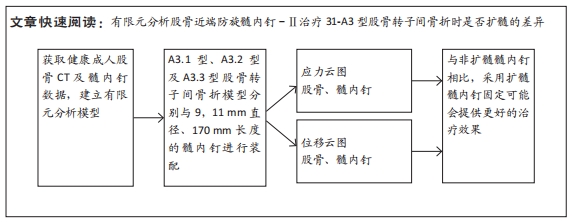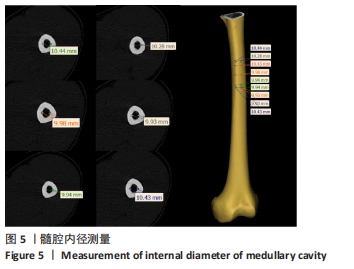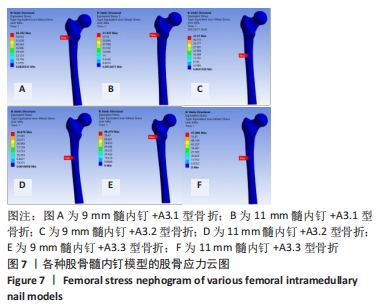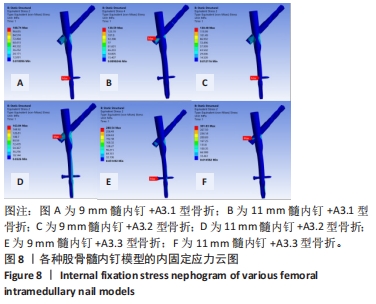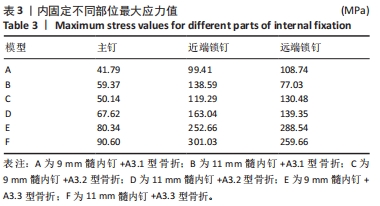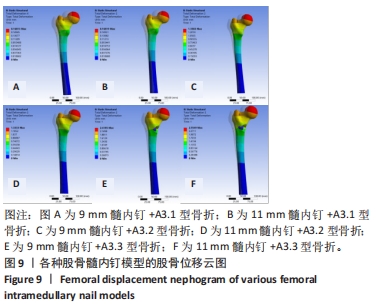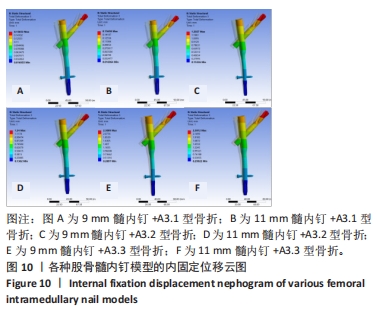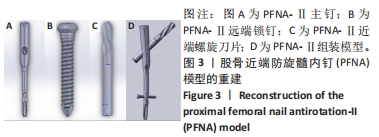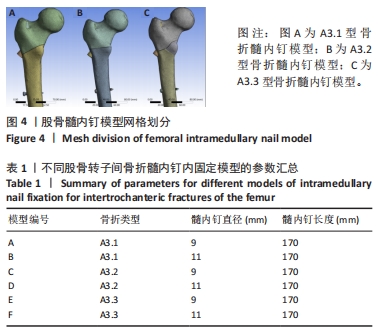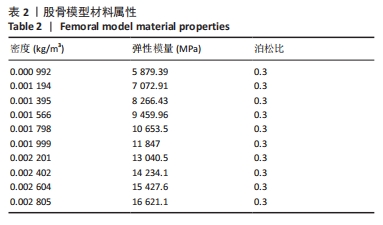[1] BRAUER CA, COCA-PERRAILLON M, CUTLER DM, et al. Incidence and mortality of hip fractures in the United States. JAMA. 2009;302(14): 1573-1579.
[2] 王璞. 老年髋部骨折流行病学特征及致伤因素分析[D].西安:中国人民解放军空军军医大学,2022.
[3] 葛迅, 陈小虎, 吴成玉, 等. 股骨转子间骨折的治疗进展[J]. 锦州医科大学学报,2019,40(4):109-112.
[4] 冯俊超,高明暄,骆文远.股骨转子间骨折外侧壁与内侧壁的意义[J].中国矫形外科杂志,2023,31(5):436-440.
[5] HAN L, LIU JJ, HU YG, et al. Controlled Study On Gamma Nail and Proximal Femoral Locking Plate for Unstable Intertrochanteric Femoral Fractures with Broken Lateral Wall. Sci Rep. 2018;8(1):11114.
[6] 吴钟汉,王景坤,李涛,等.股骨近端防旋髓内钉治疗外侧壁完整型和外侧壁危险型股骨转子间骨折[J].中国组织工程研究,2024, 28(6):911-916.
[7] 陈心敏, 罗斯嘉, 夏卓伟, 等. 钉道强化股骨近端防旋髓内钉治疗老年A3.3型股骨转子间骨折的有限元分析[J]. 中国组织工程研究, 2020,24(27):4265-4271.
[8] 杨大威. 股骨转子间骨折的研究进展[J]. 创伤外科杂志,2020, 22(12):959-961.
[9] AUDIGÉ L, HANSON B, SWIONTKOWSKI MF. Implant-Related Complications in the Treatment of Unstable Intertrochanteric Fractures: Meta-Analysis of Dynamic Screw-Plate Versus Dynamic Screw-Intramedullary Nail Devices. Int Orthop. 2003;27(4):197-203.
[10] 刘泽民, 吕欣, 刘晋元, 等. 髋部骨折2342例流行病学分布特点的单中心分析[J]. 中国组织工程研究,2020,24(32):5085-5091.
[11] 罗先正, 张薇. 髓内钉的生物力学设计[J]. 中华骨科杂志,1997, 10(4):272-276.
[12] ROSA N, MARTA M, VAZ M, et al. Intramedullary Nailing Biomechanics: Evolution and Challenges. Proc Inst Mech Eng H. 2019;233(3):295-308.
[13] YANG S, YANG Y, HUO Y, et al. Effect of the degree of displacement of the third fragment on healing of femoral shaft fracture treated by intramedullary nailing. J Orthop Surg Res. 2022;17(1):380.
[14] JUNG O, LINDNER C, PANTERMEHL S, et al. Heat Development During Medical Drilling: Influencing Factors and Examination Methods - Overview and First Results. In Vivo. 2021;35(6):3011-3017.
[15] GIANNOUDIS PV, SNOWDEN S, MATTHEWS SJ, et al. Temperature rise during reamed tibial nailing. Clin Orthop Relat Res. 2002;(395):255-261.
[16] OCHSNER PE, BAUMGART F, KOHLER G. Heat-induced segmental necrosis after reaming of one humeral and two tibial fractures with a narrow medullary canal. Injury. 1998;29(Suppl S2):B1-B10.
[17] ROMAN PFEIFER MD, BARKATALI BM, PETER GIANNOUDIS MD, et al. Physiologic Effects Associated with Intramedullary Reaming. Springer London, 2015.
[18] BREKELMANS WAM, POORT HW, SLOOFF TJJH. A New Method to Analyse the Mechanical Behaviour of Skeletal Parts. Acta Orthop Scand. 1972;43(5):301-317.
[19] GHOSH R, CHANDA S, CHAKRABORTY D. Application of finite element analysis to tissue differentiation and bone remodelling approaches and their use in design optimization of orthopaedic implants: A review. Int J Numer Method Biomed Eng. 2022;38(10):e3637.
[20] 冯卫. 三种股骨近端髓内固定系统(PFNA、PFNA-II、InterTan)与中国人股骨近端形态学匹配性研究及其固定股骨转子间骨折的有限元分析[D]. 广州:南方医科大学,2012.
[21] 乔文, 吕欣, 刘晋元, 等. 有限元评估尖顶距与股距尖顶距对股骨转子间骨折髓内钉内固定术后稳定性的影响[J]. 中国组织工程研究,2020,24(36):5755-5763.
[22] 张世民, 余斌. Ao/Ota-2018版股骨转子间骨折分类的解读与讨论[J]. 中华创伤骨科杂志,2018,20(7):583-587.
[23] 袁高翔, 张伟滨. 有限元分析在骨骼肌肉系统模型材料特性研究中的应用[J]. 国际骨科学杂志,2011,32(6):352-355.
[24] 张国栋, 廖维靖, 陶圣祥, 等. 股骨颈有限元分析的赋材料属性方法探讨及有效性验证[J]. 中国组织工程研究与临床康复,2009, 13(52):10263-10268.
[25] 徐锴, 李开南. 三种内固定固定股骨转子间六部分骨折各分型稳定性的有限元分析[J]. 中华创伤骨科杂志,2019,21(4):345-352.
[26] 蔡群斌, 邹霞, 胡剑涛, 等. 有限元法分析尖顶距与股骨近端防旋髓内钉固定股骨转子间骨折稳定性的关系[J]. 中国组织工程研究, 2021,25(6):831-836.
[27] 武建超. 内外侧壁损伤及小转子骨折模式对股骨粗隆间骨折生物力学影响的有限元分析[D]. 兰州:兰州大学,2020.
[28] 虎群盛. 改良股骨近端髓内钉固定Evans ⅳ型股骨转子间骨折的有限元分析[D]. 广州:广州中医药大学,2017.
[29] KEYAK JH, KANEKO TS, TEHRANZADEH J, et al. Predicting Proximal Femoral Strength Using Structural Engineering Models. Clin Orthop Relat Res. 2005;(437):219-228.
[30] 杜育任. 股骨转子间骨折形态特点对内固定效果的影响[D]. 天津:天津医科大学,2019.
[31] 胡慧婷. 股骨有限元建模及相应的生物力学分析[D]. 太原:太原理工大学,2014.
[32] HELLER MO. Finite element analysis in orthopedic biomechanics[M].Human orthopaedic biomechanics. Academic Press, 2022:637-658.
[33] MISHRA RN, SINGH MK, KUMAR V. Biomechanical analysis of human femur using finite element method: A review study. Mater Today Proc. 2022;56:384-389.
[34] GOTFRIED Y. The lateral trochanteric wall: a key element in the reconstruction of unstable pertrochanteric hip fractures. Clin Orthop Relat Res. 2004;(425):82-86.
[35] MUSTAFA MA, LI S, BANO S, et al. Advances in the Restoration and Fixation of Lateral Femoral Wall Fracture. Proc Ant Res. 2023;7(1):30-40.
[36] 林荣侯, 刘勇, 隋丽娟, 等. InterTAN、PFNA、DHS治疗不稳定性股骨粗隆间骨折的比较[J]. 中国矫形外科杂志,2020,28(6):507-511.
[37] HUANG C, WU X. Surgical Selection of Unstable Intertrochanteric Fractures: PFNA Combined with or without Cerclage Cable. Biomed Res Int. 2021;1:1-12.
[38] TIAN Z, CHEN J, ZHANG Y, et al. A Retrospective Study of 98 Elderly Patients with High-Risk Lateral Femoral Wall Intertrochanteric Hip Fractures to Compare Outcomes Following Surgery with Proximal Femoral Nail Antirotation (PFNA) Versus Dynamic Hip Screw (DHS). Med Sci Monit. 2022;28:e936923.
[39] MUKHERJEE K, PRASHANTH KR, KUMAR RD. Mismatch of short straight proximal femur nails with anterior bow of femur in Indian population- A radiological and functional analysis. J Orthop. 2022;29:65-70.
[40] BONG MR, KOVAL KJ, EGOL KA. The history of intramedullary nailing. Bull NYU Hosp Jt Dis. 2006;64(3-4):94-97.
[41] TUCKER SM, WEE H, FOX E, et al. Parametric Finite Element Analysis of Intramedullary Nail Fixation of Proximal Femur Fractures. J Orthop Res. 2019;37(11):2358-2366.
[42] 徐绍勇. 交锁髓内钉扩髓与否在治疗胫骨骨折中的临床比较研究[D]. 福州:福建中医药大学,2010.
[43] CLAES L. Improvement of clinical fracture healing-What can be learned from mechano-biological research? J Biomech. 2021;115:110148.
[44] 何祥鑫, 林梓凌, 李鹏飞, 等. 基于Hypermesh 14.0和LS-DYNA的老年转子间骨折有限元建模分析[J]. 中国组织工程研究,2018, 22(11):1725-1730.
[45] 陈心敏, 李文标, 熊凯凯, 等. 钉道强化股骨近端防旋髓内钉治疗老年A3.3型股骨转子间骨折:最佳骨水泥量有限元分析[J]. 中国组织工程研究,2021,25(9):1404-1409.
[46] 何祥鑫. 内收肌主动响应对脾虚型老年髋部骨折断裂行为影响的有限元研究[D]. 广州:广州中医药大学,2018. |
